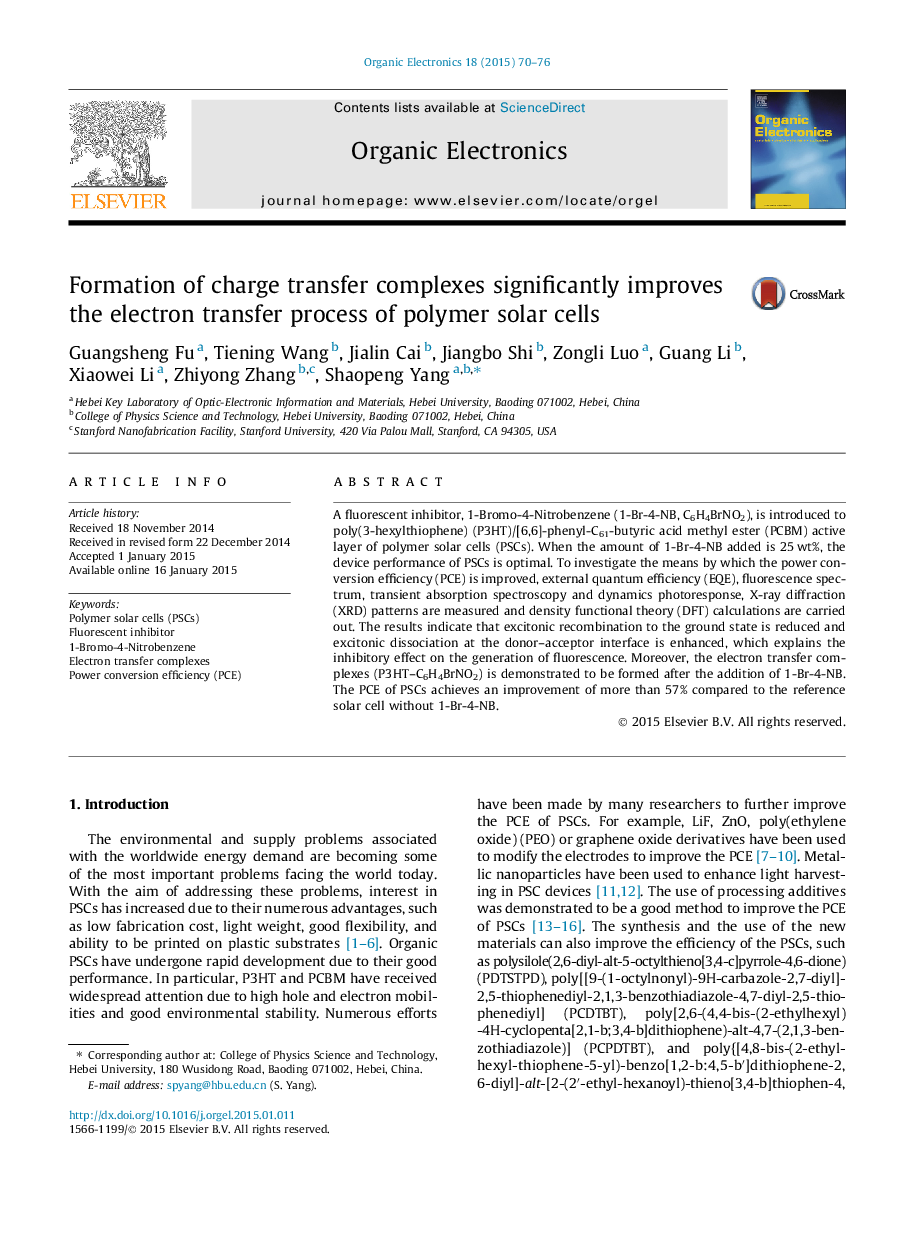| کد مقاله | کد نشریه | سال انتشار | مقاله انگلیسی | نسخه تمام متن |
|---|---|---|---|---|
| 1267227 | 1496839 | 2015 | 7 صفحه PDF | دانلود رایگان |
• 1-Bromo-4-Nitrobenzene is first introduced to P3HT:PCBM active layer of PSCs.
• Results show that it has a good inhibitory effect on the generation of fluorescence.
• Electron transfer complexes (P3HT–C6H4BrNO2) is proved to be formed.
• The PCE increase from 3.3% to 5.2%, which is an improvement of more than 57%.
A fluorescent inhibitor, 1-Bromo-4-Nitrobenzene (1-Br-4-NB, C6H4BrNO2), is introduced to poly(3-hexylthiophene) (P3HT)/[6,6]-phenyl-C61-butyric acid methyl ester (PCBM) active layer of polymer solar cells (PSCs). When the amount of 1-Br-4-NB added is 25 wt%, the device performance of PSCs is optimal. To investigate the means by which the power conversion efficiency (PCE) is improved, external quantum efficiency (EQE), fluorescence spectrum, transient absorption spectroscopy and dynamics photoresponse, X-ray diffraction (XRD) patterns are measured and density functional theory (DFT) calculations are carried out. The results indicate that excitonic recombination to the ground state is reduced and excitonic dissociation at the donor–acceptor interface is enhanced, which explains the inhibitory effect on the generation of fluorescence. Moreover, the electron transfer complexes (P3HT–C6H4BrNO2) is demonstrated to be formed after the addition of 1-Br-4-NB. The PCE of PSCs achieves an improvement of more than 57% compared to the reference solar cell without 1-Br-4-NB.
1-Bromo-4-Nitrobenzene (1-Br-4-NB, C6H4BrNO2) is introduced to poly(3-hexylthiophene) (P3HT)/[6,6]-phenyl-C61-butyric acid methyl ester (PCBM) active layer of polymer solar cells. Results show that 1-Br-4-NB and P3HT form stable coplanar charge transfer complexes through hydrogen bonds. Formation of the P3HT–C6H4BrNO2 complex leads to reduced excitonic recombination to the ground state through fluorescence emission and enhanced excitonic dissociation at the donor–acceptor interface. As a result, the PCE of the PSCs is improved due to the increased photoelectric conversion efficiency.Figure optionsDownload as PowerPoint slide
Journal: Organic Electronics - Volume 18, March 2015, Pages 70–76
